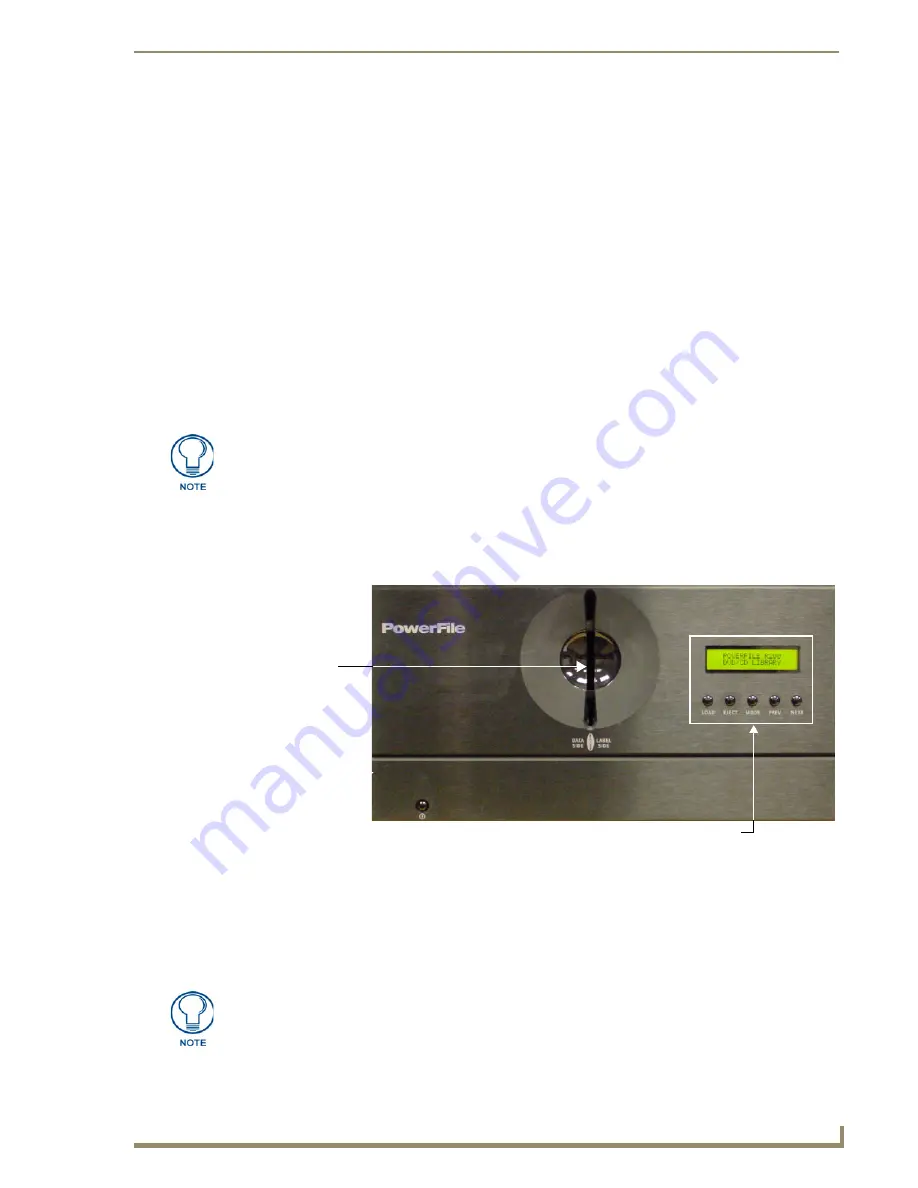
Using MAX MDL200 and the MAX-MDLD
9
MAX-MDL200 Multi-Disc Loader System
Using MAX MDL200 and the MAX-MDLD
Overview
Once the MAX-MDLD is communicating with both the PC and the target MAX server (see previous
section), it is ready to be used for transferring media to the server. The main steps in the process are:
1.
Loading Discs Into the MAX-MDLD
: physically loading the discs into the MAX-MDLD carousel.
2.
Transferring the Disc Images: Loading the contents of the discs to the target MAX server.
Depending on the settings specified (in the Settings dialog), you may need to manually identify any
discs that were not automatically identified. See the
Verifying Communication Between the PC,
MAX-MDLD and MAX Server
section on page 6 for details.
3.
Unloading the Discs: Physically removing the discs from the MAX-MDLD. Refer to the
Removing
Discs From The MAX-MDLD
section on page 15 for details.
Each of these steps are described in the following sub-sections.
Loading Discs Into the MAX-MDLD
Discs are physically loaded into the MAX-MDLD through the vertical slot on the front panel of the unit
(see FIG. 1), using the
Changer > Load Range
and
Load All
options in MAX MDL200.
1.
First verify that the MAX-MDLD is powered up (the power switch is located on the lower-left of the
front panel), and communicating with the PC and the target MAX Server (refer to the
Verifying
Communication Between the PC, MDL200 and MMS Server
section on page 12 for details).
2.
Select
Changer > Load Range
or
Load All
from the MAX MDL200 menu bar.
If MAX MDL200 is not already running on the PC, launch the software before
beginning.
FIG. 1
Loading Discs Into the MAX-MDLD
Disc slot
(load discs here)
(front)
Label side faces
to the right
Front panel controls not used
(use the transport controls provided in MAX MDL200 instead)
The
Changer > Load Range
and
Load All
options operate the same, except that
Load Range allows you to specify a range of slots to load (in the Start Disc/End Disc
fields).






























